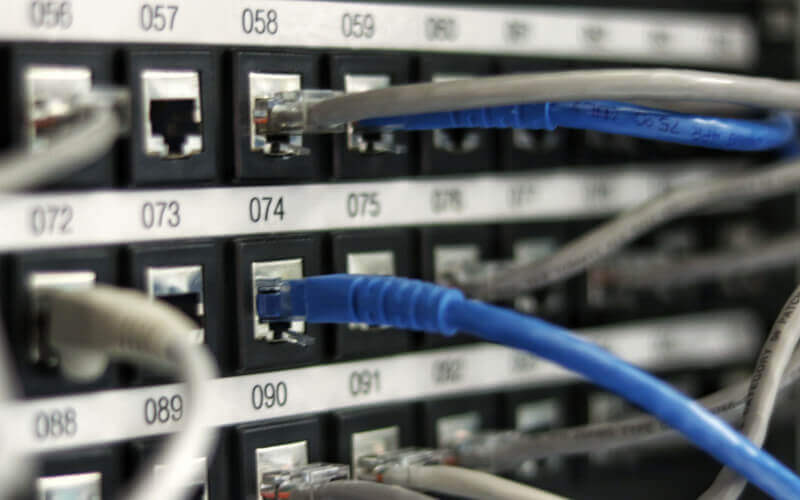As a technology enthusiast, I know that choosing the right cable for your network can be a daunting task. With so many options on the market, it can be difficult to know which cable best fits your needs.
I often hear one question: “What’s the difference between Cat6 and Cat7 cables?” In this article, I’ll review the key differences between these cables and help you decide which is right.
What is the Difference Between Cat 6 and Cat 7?
Speed and Bandwidth
The most apparent difference between Cat6 and Cat7 cables is their speed and bandwidth capabilities. Cat6 cables can support speeds up to 1 Gbps (gigabits per second) and have a bandwidth of 250 MHz (megahertz).
On the other hand, Cat7 cables can support speeds up to 10 Gbps and have a bandwidth of 600 MHz. This means that Cat7 cables can handle more data faster than Cat6 cables.
Shielding
Another key difference between Cat6 and Cat7 cables is their shielding. Cat6 cables have a single layer of shielding, called foil shielding, which helps to reduce interference from other electronic devices.
Cat7 cables, however, have two layers of shielding: SSTP (shielded twisted pair) and SFTP (screened twisted pair). This added layer of shielding helps to reduce interference further and ensures that your data stays secure.
Distance
The distance a cable can transmit data is another important consideration when choosing between Cat6 and Cat7 cables. Cat6 and Cat7 cables can transmit data up to 100 meters (328 feet) when used with a switch.
Cost
Of course, the cost is always important when choosing any technology. In general, Cat6 cables are less expensive than Cat7 cables. Remember that although the initial cost of Cat6 cables may be more economical, the shielded wires and greater reach capabilities of Cat7 cables make them a smarter investment in the grand scheme.
Compatibility
One thing to remember when choosing between Cat6 and Cat7 cables is compatibility. Cat6 and Cat 7 cables are backward compatible with most devices and networks that support Cat5 and Cat5e cables. If you have an older device or network, you can still use a Cat6 or Cat7 cable without any issues.
Installation
Another consideration when choosing between Cat6 and Cat7 cables is installation. Both cables are relatively easy to install and can be done by most people with basic DIY skills. However, there is one key difference between the two cables in terms of installation.
Cat7 cables are a bit thicker than Cat6 cables, making them slightly more difficult to bend and route through tight spaces. This is not a significant difference, but it’s something to keep in mind if you install the cable yourself.
Durability
Durability is another important factor when choosing between Cat6 and Cat7 cables. Both cables are designed to be durable and long-lasting, but Cat7 cables are slightly more durable than Cat6 cables. This is because Cat7 cables are made with thicker gauge wire and have an added layer of shielding, which provides extra protection against damage.
However, both cables are designed to withstand the rigors of daily use and should last for several years with proper care and maintenance.
Future-Proofing
Another important consideration when choosing between Cat6 and Cat7 cables is future-proofing. As technology evolves, the demands on networks will continue to increase. While Cat6 cables can support speeds up to 1 Gbps, Cat7 cables can support 10 Gbps.
If you’re looking to future-proof your network and ensure that it can handle the demands of new technology, Cat7 cables would be the better choice.
Applications
When deciding between Cat6 and Cat7 cables, you must consider the specific applications for which you’ll be using the cable. For example, if you’re setting up a home network, a Cat6 cable would be more than sufficient for your needs.
However, if you’re setting up a large enterprise network or a data center, a Cat7 cable would be a better choice to support high-speed and high-bandwidth applications.
Additionally, if you’re setting up a network that requires security and reliability, such as a financial institution or a government agency, a Cat7 cable would be the best choice. The added shielding and interference protection of the Cat7 cable will ensure that your sensitive data stays secure and protected.
Conclusion
The choice between Cat6 and Cat7 cables will depend on your specific needs, budget, and applications. Cat6 and Cat7 cables are high-quality options that can support high speeds and bandwidths, but Cat7 cables offer added shielding, distance capabilities, and future-proofing.
Before selecting a network, make sure to factor in its specific requirements and compatibility with your existing devices and any long-term needs.
Cat6 cables are a good option for home and regular use, while Cat7 cables are best for enterprise networks, data centers, and applications requiring added security and reliability.
Ultimately, the choice between Cat6 and Cat7 will depend on your specific needs and budget. I hope this article has given you the information you need to make an informed decision when choosing a cable for your network.






